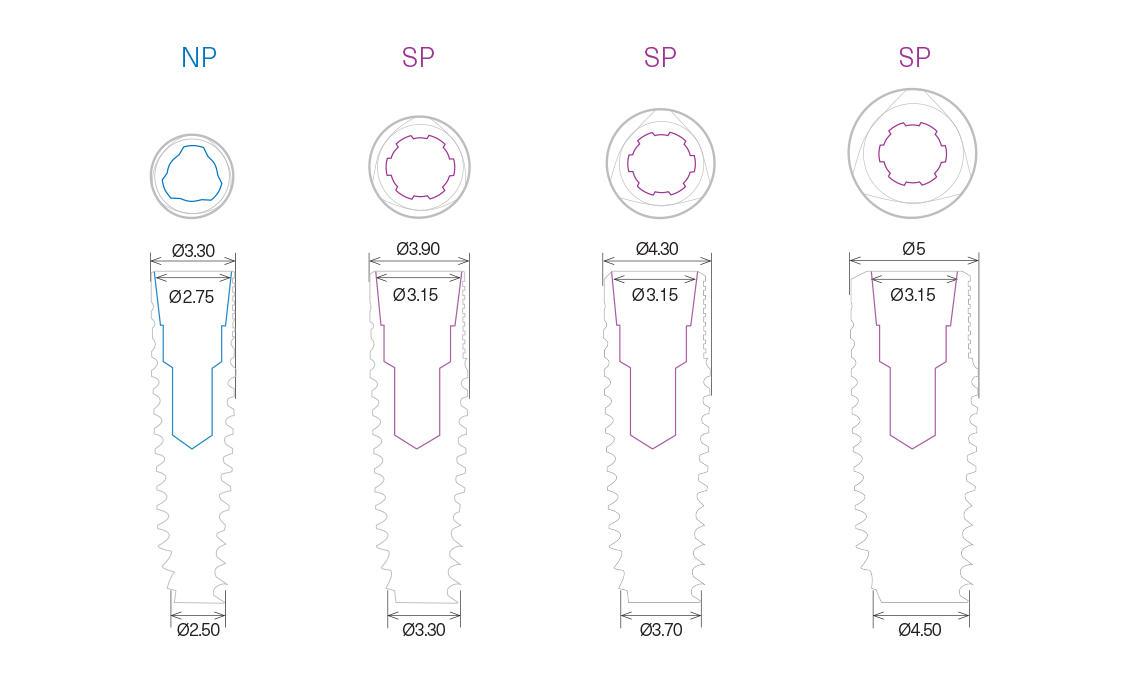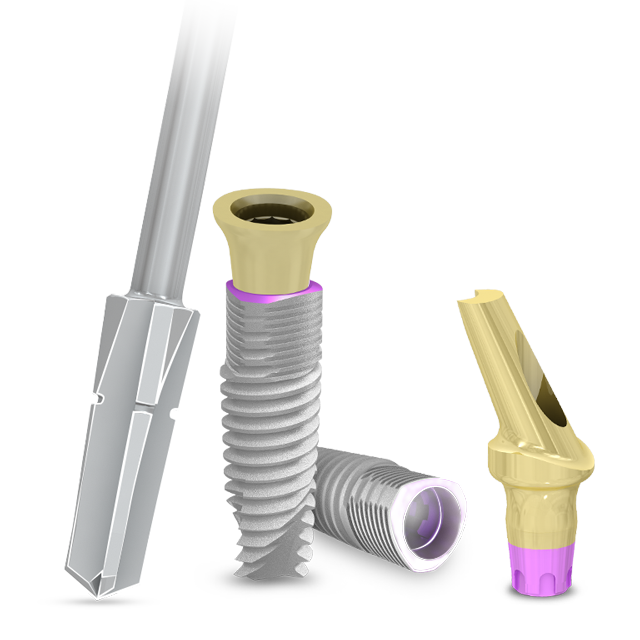Implant à Connexion Conique V3
L’implant V3 est une solution révolutionnaire, innovante et sophistiquée. Il a été conçu par des praticiens, pour des praticiens et sa conception géométrique permet une meilleure gestion de l’esthétique par la préservation et la croissance des tissus.
La solution complète de connexion conique MIS offre :
- Une solution prothétique cohérente.
- Un kit de chirurgie.
- Un protocole de forage.
- Deux géométries uniques des systèmes implantaires C1 et V3 qui assurent une intégration des implants et une croissance osseuse optimales.
Les avantages
- Esthétique : Une large gamme de composants prothétiques à connexion conique MIS présente une précision irréprochable ; un profil d’émergence concave constant pour d’excellents résultats sur les tissus mous ; une teinte dorée pour d’excellents résultats esthétiques.
- Insertion de l'implant : Le col triangulaire de l’implant V3 a été conçu pour servir de réservoir à l’accumulation de sang et à la formation de caillots sanguins. Ces conditions sont indispensables à la fois pour la bonne intégration de l’implant et pour permettre une croissance osseuse optimale.
- Diminution de la perte osseuse : Les espaces situés autour du col de l’implant ont été prévus afin de créer une zone ouverte et sans compression. La réduction des contraintes sur l’os cortical peut ainsi minimiser la perte de crête osseuse.
- Une précision maximale : Chaque emballage de l’implant V3 comprend son propre foret final stérile à usage unique qui convient à tous les types d’os, ce qui accroît la précision de l'ajustement. Les outils d’insertion V3 sont marqués pour faciliter l’orientation de l’implant pendant la pose.
- Une étanchéité parfaite : L’implant V3 est doté d’une connexion conique à 12 degrés qui garantit un ajustement sûr par friction entre le pilier et l’implant. Des index coniques se trouvent à l'intérieur de la connexion conique pour faciliter l’orientation de l’implant pendant l’insertion et le placement du pilier dans la bonne position.
V3 avec état de Surface B+
Le B+ est une caractéristique biologique des implants MIS qui permet une ostéointégration efficace et durable. Une couche mono-moléculaire de multi-phosphonate est fixée de façon permanente à la surface de l’implant, que l’organisme perçoit comme un os.
Informations techniques




